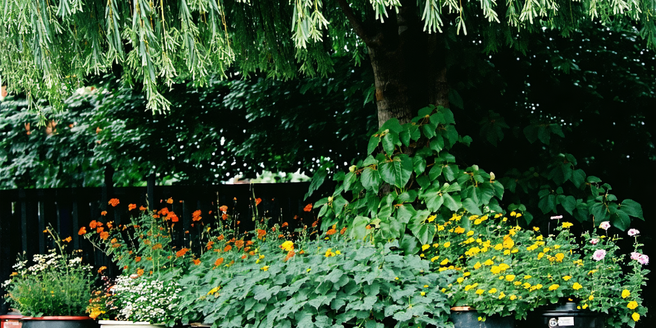Eco-friendly Landscaping Ideas

Sustainable Plant Selection for Your Garden
Choosing sustainable plants is vital for creating an eco-friendly garden. Opt for native species that are naturally adapted to your region’s climate and soil, minimizing the need for chemical inputs. These plants require less water, fertilizer, and pesticides, reducing environmental impact. Diversifying plant types can also foster a healthy ecosystem by attracting beneficial insects like pollinators and natural predators. Additionally, consider companion planting to enhance growth and deter pests naturally. By selecting drought-resistant and perennial varieties, you save on resources and effort, as these plants maintain resilience against climate fluctuations. Incorporating edible plants, such as herbs and veggies, enriches biodiversity and offers fresh produce. Ultimately, sustainable plant selection supports a thriving, biodiverse garden that harmonizes with nature while reducing your ecological footprint.
Water Conservation Techniques in Landscaping
Adopting water conservation practices in your landscape can significantly reduce resource usage and promote sustainability. Implementing drip irrigation systems ensures water is delivered directly to plant roots, minimizing waste through evaporation. Mulching garden beds with organic materials like bark or straw helps retain soil moisture and suppress weeds. Consider planting drought-tolerant species that require less water and thrive in challenging conditions. Designing rain gardens or swales captures runoff, allowing water to naturally infiltrate into the soil. Rain barrels provide household water for the garden, further reducing reliance on municipal supplies. Xeriscaping, a landscaping method focusing on drought-resistant plants, reduces irrigation needs while beautifying the space. These strategic water-saving techniques not only lower your water bill but also contribute to preserving this precious resource for future generations while enhancing garden health.
Incorporating Native Flora for Biodiversity
Integrating native flora in your landscape is a key strategy for promoting biodiversity and creating a balanced ecosystem. Native plants have evolved to thrive in local conditions, providing food and habitat for indigenous wildlife. This fosters a thriving community of birds, insects, and other beneficial organisms that maintain ecological balance. Native trees and shrubs offer shelter and nesting sites, supporting local birds and pollinators like bees and butterflies, essential for pollination. These plants are also more resilient to pests and diseases, reducing the need for chemical interventions. By designing a landscape with native species, you create a harmonious environment that boosts biodiversity, conserves water, and reduces maintenance. This sustainable gardening approach not only enhances the beauty of your space but also positively impacts the surrounding ecosystem, making your garden a haven for local wildlife.
DIY Composting Solutions for a Greener Yard
Creating your own compost is an eco-friendly way to enrich your garden’s soil while reducing waste. Composting transforms kitchen scraps and yard waste into nutrient-rich organic matter. Start by designating a composting area or constructing a bin. Balance green materials, like fruit scraps and grass clippings, with brown materials, such as leaves and small branches, to promote decomposition. Regularly turning the pile aerates it, speeding up the composting process. Harvest finished compost to spread around plants, improving soil structure and fertility. Incorporate vermiculture, or worm composting, for a fast method that produces valuable worm castings. By composting, you reduce landfill waste and chemical fertilizer reliance. The result is a sustainable, self-sufficient gardening practice that improves plant growth and soil health while benefiting the environment.
Low-Maintenance Eco-friendly Lawn Alternatives
Transforming your lawn into a low-maintenance, eco-friendly landscape reduces upkeep and environmental impact. Consider replacing grass with ground covers like clover or creeping thyme, which require less mowing and watering. These options enrich soil fertility and discourage weed growth. Ornamental grasses and wildflower meadows create visual interest and support pollinators. Hardscaping with materials like gravel or pavers minimizes water use and provides functional outdoor spaces. Incorporating native plants further enhances biodiversity, reducing dependency on chemical inputs. Planting a mix of drought-tolerant species ensures resilience against changing weather patterns. Embrace natural mowing methods, such as allowing lawns to grow longer, shading soil and retaining moisture. By selecting these alternatives, you enjoy a beautiful, sustainable lawn that conserves resources and supports a thriving ecosystem, providing a sanctuary for both people and wildlife.